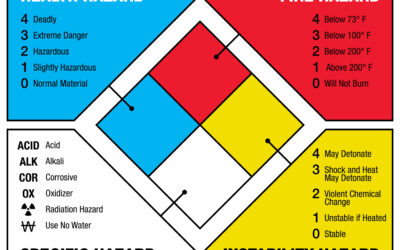OSHA estimates roughly 2 million Americans are victims of workplace violence every year. According to the Bureau of Labor Statistics, 20,870 workers were injured from nonfatal workplace violence in 2019, and 453 U.S. workers were workplace homicide victims in 2018. Unfortunately, the violent crime rate has only increased over the past few years.
Business owners must prepare for various emergencies, including physical violence in the workplace.
Preparation is Key
The Department of Homeland Security encourages businesses to proactively think about their role in the safety and security of their workplace and the larger community. The Department recommends applying four steps in advance of an incident or attack.
1. Connect
Develop relationships with your local community and invite law enforcement to tour your business. If you have security maps for your facility, consider sharing them with local emergency personnel like police, first responders, and the fire department. Having these relationships in place helps speed up response if something happens.
2. Plan
Think about how you will handle a security event if one should occur. Are there geographic threats specific to your region? Are there threats specific to your type of business? Learn from other events to inform what you should do in an emergency.
Planning can involve:
- Access control
- Suspicious activity reporting
- Security requirements and monitoring program
- Emergency communications
- Evacuation and shelter-in-place plans
- Multiple evacuation routes with appropriate signage
3. Train
Provide your employees with training on how to report suspicious activity and what to do during a security incident. Help them understand security basics and how your business will respond to an emergency.
The Department of Homeland Security offers free Tabletop Exercises to help start discussions about your preparedness for a broad range of scenarios, including physical and cybersecurity incidents.
4. Report
Your employees are a critical part of detecting early signs of workplace violence and obtaining help as soon as possible. “See something, say something” isn’t just a slogan. Vigilant employees can mitigate the risk of workplace violence by alerting the appropriate authority if they notice something out of the ordinary.
Post details on how to report suspicious activity and encourage employees, tenants, and visitors to remain alert. Things to consider include unattended vehicles, repeat visitors, outsiders who have no apparent business in non-public areas, abandoned backpacks, or other unusual activity.
The Cybersecurity & Infrastructure Security Agency (CISA) offers free security tools and resources, including checklists, posters, and booklets on active shooter preparedness.
Your EOP Should Include Workplace Violence
Your Emergency Operations Plan, or EOP, is a document that addresses how your organization will respond and recover from an emergency incident. EOPs should cover a wide variety of incidents like fire, flood, severe weather, and active shooter events.
The Federal Emergency Management Agency (FEMA) created a comprehensive resource on “Developing and Maintaining Emergency Operations Plans.” This document provides fundamentals on risk-informed planning and helps decision makers develop and maintain viable all-hazards emergency plans. Especially useful is the “Basic Plan Content Guide”, which details what to include in your EOP.
The Department of Homeland Security also has a comprehensive guide on how to plan for an active shooter incident.
Your Safety Mapping Experts
The best way to prepare for an emergency is to plan for it. In addition to active shooter response, a comprehensive EOP should also include safety mapping. These maps help people know where to go and what to do during an emergency and help coordinate response with local authorities, saving precious minutes during a security incident.
The experts at Building Maps can help improve your EOP with detailed and easy-to-read maps. Our illustrators are trained in fire and life safety so you can be prepared for any event. Remember, it’s not just a map, it’s about saving lives.





